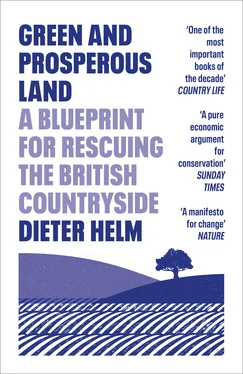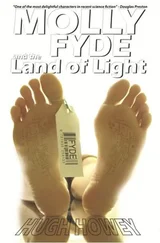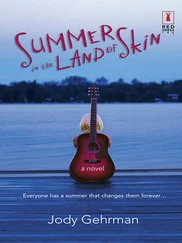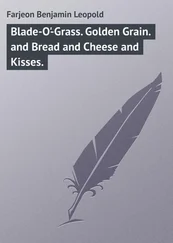BUSINESS-AS-USUAL
Imagine waking up in May 2050. You might remember the May mornings before 2020. This was a time of bright yellow oilseed rape fields. There were still some swallows, a few swifts and the occasional cuckoo. In the right place you might have heard a curlew. If you were really lucky you might have seen a spotted flycatcher. In 2050 it will be very different if we go on as we are. By then, all these birds will be rarities. There will be even fewer insects, agriculture will be more intensive and the fields barren of anything but the chosen crop.
There will be 5 million more houses, and little left of the Green Belt, except perhaps in name. Lots more roads, railway lines, solar panels and wind turbines will have industrialised the countryside. There will be very few wild salmon left, but lots of fish farms and more Trump-style golf courses. Nature will be ever-more confined to reserved areas – like zoos in an increasingly urban and industrial landscape.
There will be compensations. You will have communications technologies that cannot even be imagined today, just as I have an iPhone now, which was unimaginable a couple of decades ago. Everything will be digital, with robots, 3D printing and artificial intelligence (AI) fulfilling many of your needs. You will know your genome, and have medical treatments available to you that again are hard to imagine now.
Some economists continue to think that the natural capital you will have lost is a price worth paying for all these new benefits. But much of this can’t be simply substituted, because natural capital is not like that, open to a marginal loss here and a marginal loss there. Nature isn’t marginal, and it does not come in discrete bits to trade off against discrete bits of man-made and human capital. Worse still, it might bite back: you may know your genome, but you might not have any antibiotics that work.
This is the silent, grey and impoverished natural world we could leave to the next generation. It is what it might look like if we don’t act now, and confront the stark reality that we face if current trends continue. We cannot and should not shy away from thinking through what will happen if we carry on damaging nature and allowing our stock of natural capital to continue to decline. It is not just about the loss of nature, and all the spiritual and emotional underpinnings to what makes us fully human, but about our economic prosperity, which depends on nature and natural capital. The land would be a dull, brown and unprosperous land – and a lot less appealing to share pictures of on whatever replaces Instagram by then. We really would need a virtual and screen-based reality to console ourselves with.
Being brown, not green, means a lower level of sustainable economic growth, and perhaps even no growth at all. It is against this background that the case for nature is to be seen as a great opportunity to make us all better off: better off in a narrow economic sense, as well as a wider sense. May 2050 could be noisier and more vibrant and exciting than May 2020, and more prosperous too. But not unless we make this happen.
The decline of nature in Britain has been extensively documented by some of the world’s best naturalists. There are books about the decline of particular species, and studies and reports on the more general declines of life on farmland, uplands and in the soils. Even where things appear to have got better, as with water and urban air quality, some of this is not what it seems.[1]
Much of this evidence is specific to particular species and habitats, and it is supplemented by anecdotes and personal memories, and in novels and films. It is a spiritual and aesthetic loss, as well as a scientific one. Laurie Lee’s world of Cider with Rosie in the Slad Valley in Gloucester, Flora Thompson’s Lark Rise to Candleford , and the novels of Thomas Hardy describe a landscape full of colour and variety, with wild flowers, songbirds and elements that could almost be called wild, even though they are all man-made.[2] The early landscape painters and the Romantics eulogised nature and developed concepts of the ideal landscape and the picturesque, and Wordsworth underscores the special powers of the natural world to heal our minds – a point made repeatedly down the ages.
This art and literature, often dismissed as ‘romantic’, has a hard scientific foundation. Over the twentieth century the colour and vitality of the British landscape has been replaced by monotones of green, yellow and brown. There are dark and dense conifer forests, vivid green fertilised fields of grass, and the yellow and brown of cereal landscapes. The people have gone too: farmland, which makes up 70 per cent of the country, is now managed largely by fertilisers, agrichemicals and machines, and in time it might be autonomously farmed by robots. To the silent spring of the birds has been added the silence of people.
It has not all been downhill. The pea soup fogs have gone from the cities and the gross pollution of the mid-twentieth century has been gradually unwound. There are few rivers now that could be called biologically dead, as the Mersey and even parts of the Thames have been until relatively recently. Sewage is no longer dumped at sea, and DDT has been banned.
Some species have recovered, and these are often trumpeted as ‘successes’. The peregrine falcon is becoming quite common again (albeit as much in cities as in the uplands where illegal persecution remains); the buzzard has broken out of its southwestern enclaves; and the odd salmon has even made it up the Thames. The red kite is back in the Chilterns and mid-Wales, and is spreading fast. The cirl bunting has been pulled back from the brink of extinction in the southwest of England. Even the pine martens are showing tentative signs of recovery, and the fortunes of the otter have been transformed.
The optimists get terribly excited about these very visible improvements. Such success stories can be tracked, filmed and shown on screens, unlike the bulk of the biodiversity that lies beneath our feet in the soils. But welcome though they are, they don’t tell us much about the underlying adverse trends; nor do they indicate some quick and miraculous improvement. Like the climate sceptics who point to the odd colder year, or even just a cold snap, they mistake exceptions for the trend. It simply is not true to suggest that as people get richer, they reverse the declines and get back to anything like what has been lost. Ecosystems are complex; they require firm foundations, and many of the building blocks have been knocked away, diminishing resilience to what is coming. There is not much chance of simply going in reverse gear back to the status quo ante . We can’t just have a couple of hundred years of industrialisation, take a big environmental hit, and then, Humpty-Dumpty-like, try to put it all back together again. Nature doesn’t work like that: much has gone for good – because of us, and the inefficient short-term economy we have built.
The fundamental building blocks of natural capital – the soils, groundwater, the river catchments and the air – are not getting much better. Soils are still deteriorating from a terrible baseline; groundwater will continue to deteriorate for at least another 60 years even if we limit current pollution;[3] the carbon in the atmosphere has exceeded 400 parts per million and does not appear to have peaked;[4] and the mayflies in many rivers are now scarce. Statistically, adding more and more aliens as the globalisation of species plays out may increase the narrow measure of species biodiversity, but this is not the same thing as improving ecosystems. Counting species does not tell us much about the health of our environment. Zoos have lots of species, but not lots of nature.
Читать дальше











